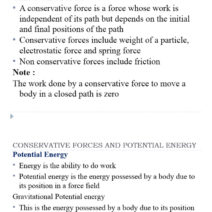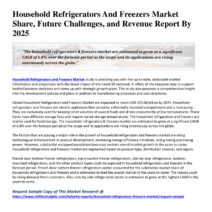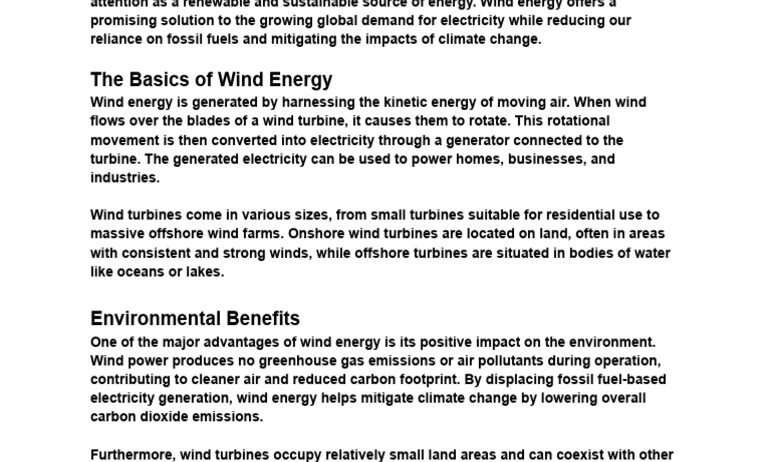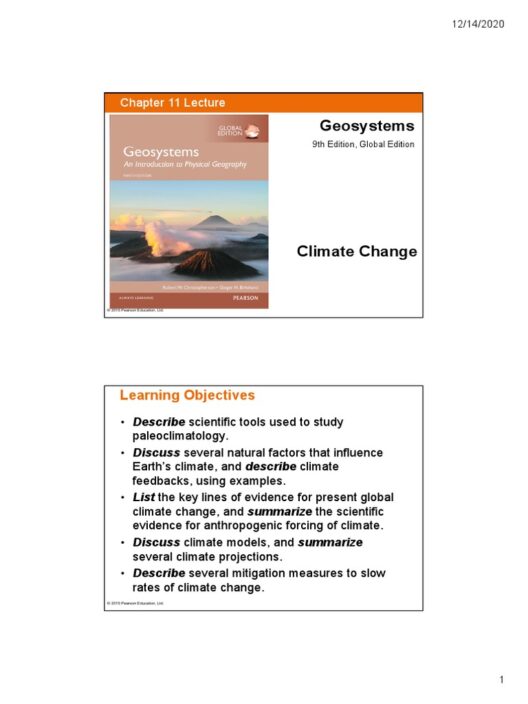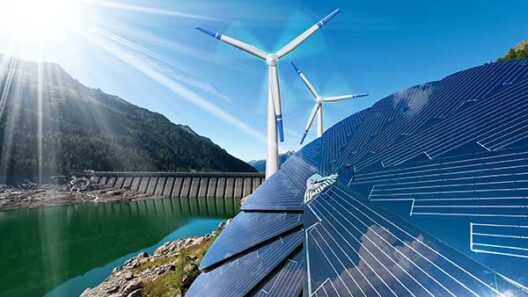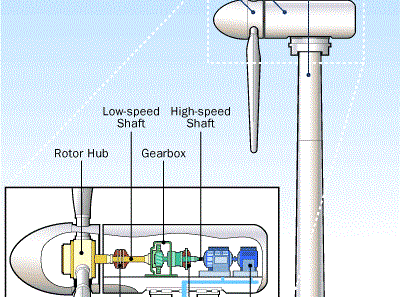Wind power, often lauded for its remarkable contribution to sustainable energy, utilizes the kinetic energy generated from moving air to produce electricity. As the world grapples with climate change, the quest for cleaner energy sources intensifies. The allure of wind power lies not only in its ecological benefits but also in the intricate process by which it transforms natural forces into usable energy. Understanding how wind power creates energy reveals a fascinating interplay between technology and nature.
A close examination of the mechanics behind wind energy generation unveils several key steps that lead from the gusts of wind to the flow of electricity in our homes and industries.
Understanding the Wind: The Essential Element
Wind is essentially the movement of air, driven primarily by the sun’s uneven warming of the Earth’s surface. As the sun heats different areas, temperature differences create variations in air pressure. High-pressure areas become a hotbed of air movement as it rushes toward low-pressure zones, generating wind. This fundamental process showcases the natural forces at play, making wind an abundant energy source just waiting to be harnessed.
Wind farms, often dotted across plains and coastal regions, capitalize on this phenomenon. These sites are carefully selected based on wind patterns, average speeds, and geographic features, all of which contribute to predictable energy generation. A location with persistent winds can be transformed into a turbine-laden landscape, ready to convert the invisible power of the wind into electricity.
The Anatomy of a Wind Turbine: Turning Motion into Energy
At the heart of wind power generation lies the wind turbine. These towering structures are marvels of engineering, designed to capture wind energy efficiently. A standard wind turbine comprises several essential components that play unique roles in the energy-generation process.
The blades of the turbine are pivotal in harnessing wind energy. Shaped like airplane wings, they are aerodynamically designed to capture the wind’s kinetic energy. When winds blow, they strike the blades, creating lift that turns the rotor. This rotational motion is then transmitted to the turbine’s drivetrain.
The drivetrain comprises gears and shafts that increase the rotor’s rotational speed to maximize electricity production. This mechanism transfers energy to the generator, a component adept at converting mechanical energy into electrical energy. The generator employs electromagnetic induction, a principle discovered in the 19th century, wherein a magnetic field surrounds a coil of wire. As the coil revolves within this field, it generates electric current—effectively transforming the motion of the turbine into electricity.
The Control System: Optimizing Energy Production
Wind turbines are equipped with sophisticated control systems that monitor and optimize energy production. These systems adjust the turbine’s orientation to face the wind—an essential function known as yawing. By utilizing wind direction sensors, the turbine can pivot to capture maximum wind energy at any given moment. Additionally, the control system ensures the turbine operates within safe limits, preventing damage from extreme wind conditions.
Another vital feature is the pitch control, which adjusts the angle of the blades in response to wind speed. This adaptability is crucial for maximizing efficiency and protecting the turbine from potential overload during high-wind events.
The Role of Energy Grid Integration: Delivering Power to Consumers
Once generated, the electricity produced by wind turbines must be delivered to consumers efficiently. This is where the energy grid comes into play. The electricity generated at wind farms is often transmitted over long distances through high-voltage power lines. To ensure a stable supply of energy, this intermittent power must be integrated with other energy sources, such as fossil fuels and renewables, creating a balanced and reliable energy grid.
Smart grid technology is transforming this process, allowing for real-time monitoring and management. By utilizing advanced software, operators can efficiently balance supply and demand, ensuring that the electrical grid remains robust and capable of delivering energy to homes and businesses at all times.
The Environmental Impact: A Cleaner Energy Future
Beyond the technological marvels, wind power offers a host of environmental benefits. Unlike fossil fuels, wind energy produces no greenhouse gas emissions during operation. By harnessing this inexhaustible resource, societies can significantly reduce their carbon footprints, contributing to global efforts to combat climate change.
Moreover, the cultivation of wind energy reduces reliance on finite resources, fostering a more sustainable energy economy. Wind farms also provide opportunities for job creation and can revitalize local economies, particularly in rural areas where they are often constructed. The myriad benefits of wind energy culminate in a vision for a cleaner, more sustainable future.
Conclusion: Embracing Wind Power
The journey from wind to electricity encapsulates a beautifully complex process that marries natural forces with cutting-edge technology. Understanding how wind power creates energy not only demystifies a vital aspect of modern energy production but also underscores the importance of pursuing sustainable energy solutions. The fascination with wind energy extends beyond its mechanics; it calls for a conscious shift towards stewardship of our planet’s resources.
As we continue to innovate and expand our capabilities in harnessing wind power, we move closer to a world where energy is abundant, renewable, and aligned with the health of our planet. Embracing wind energy is not merely a technological endeavor; it is a vital step toward a living, breathing environment that supports life for generations to come.

